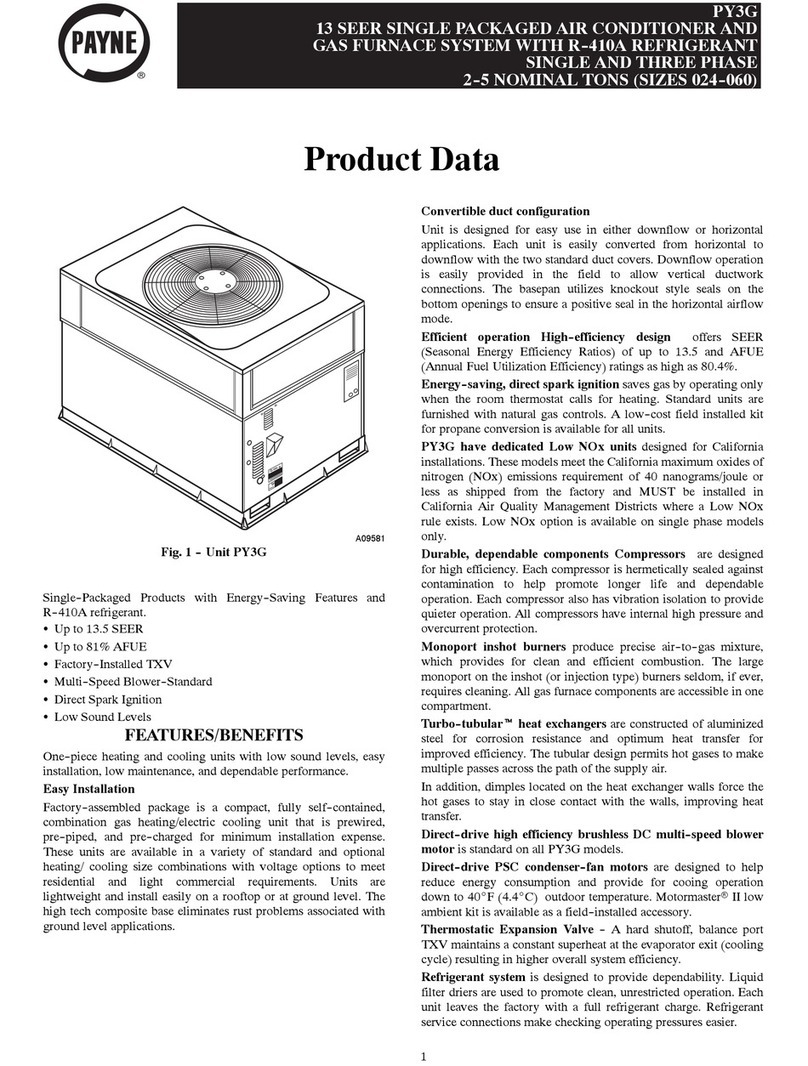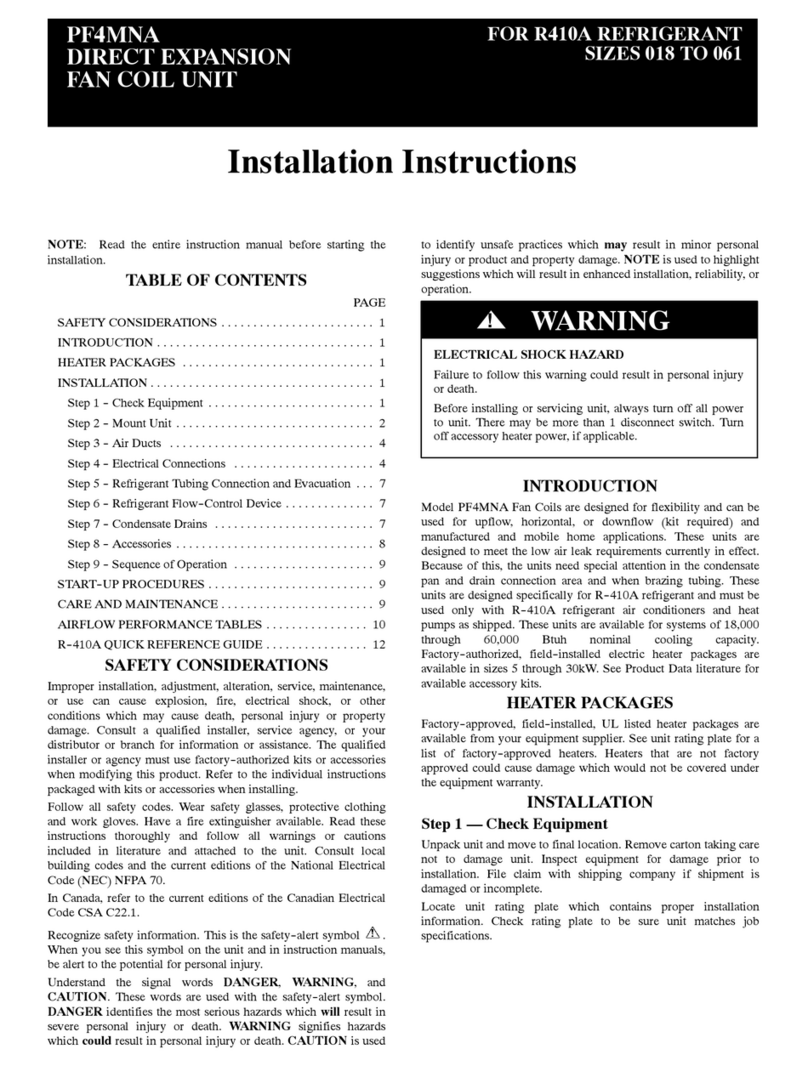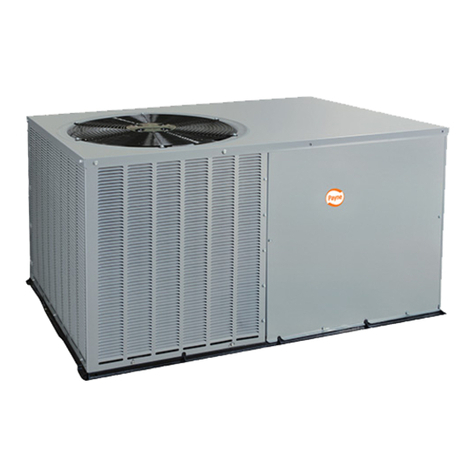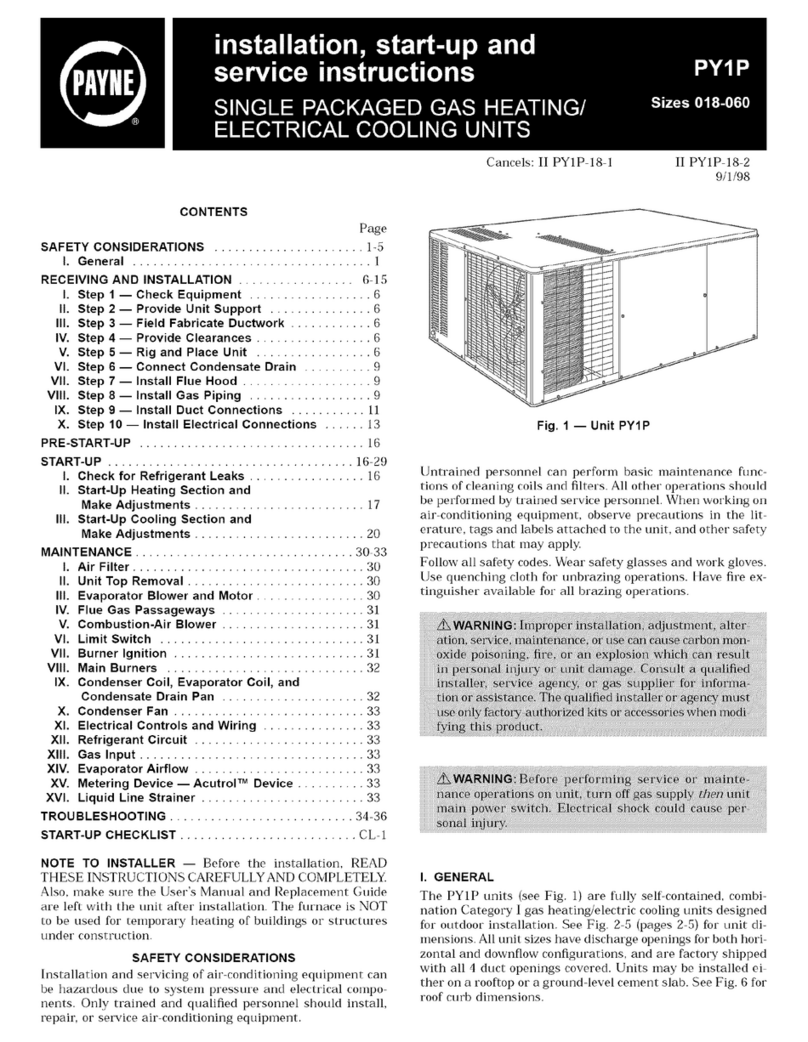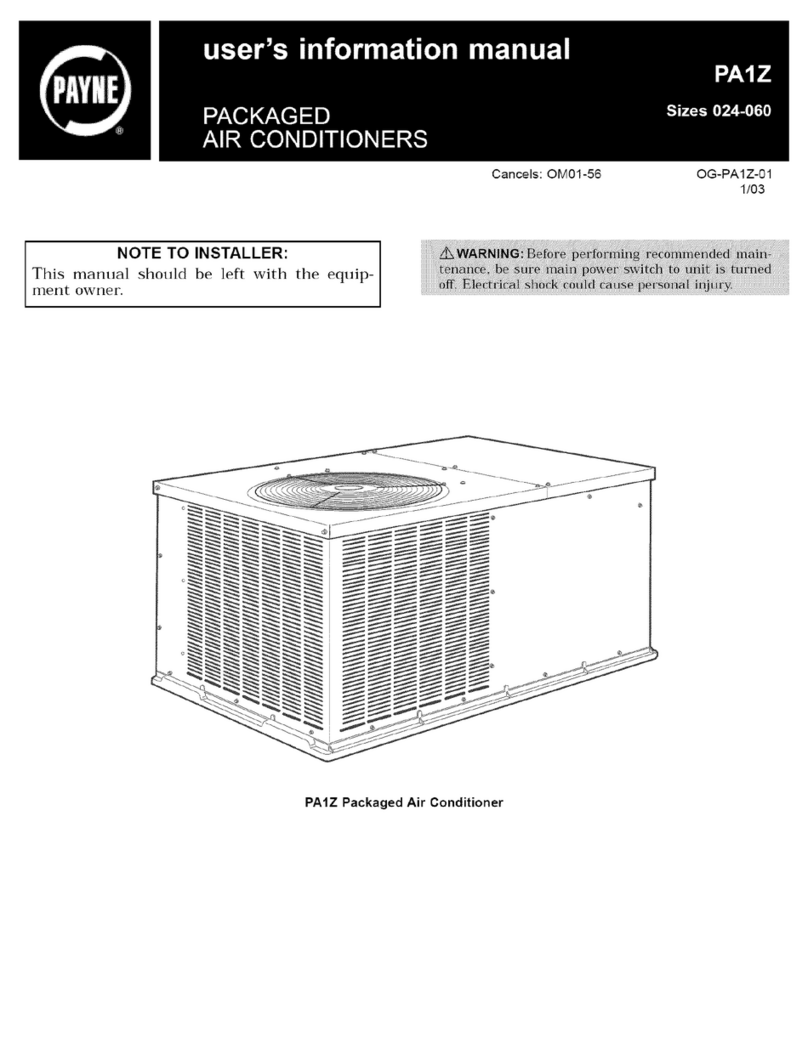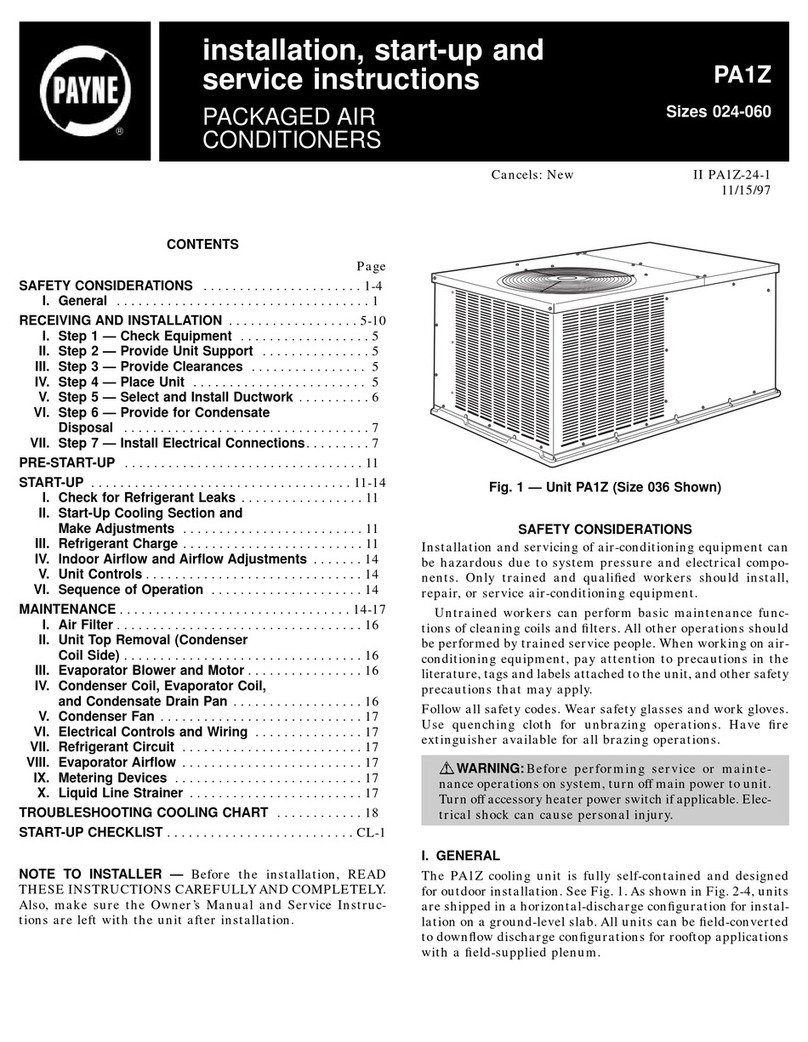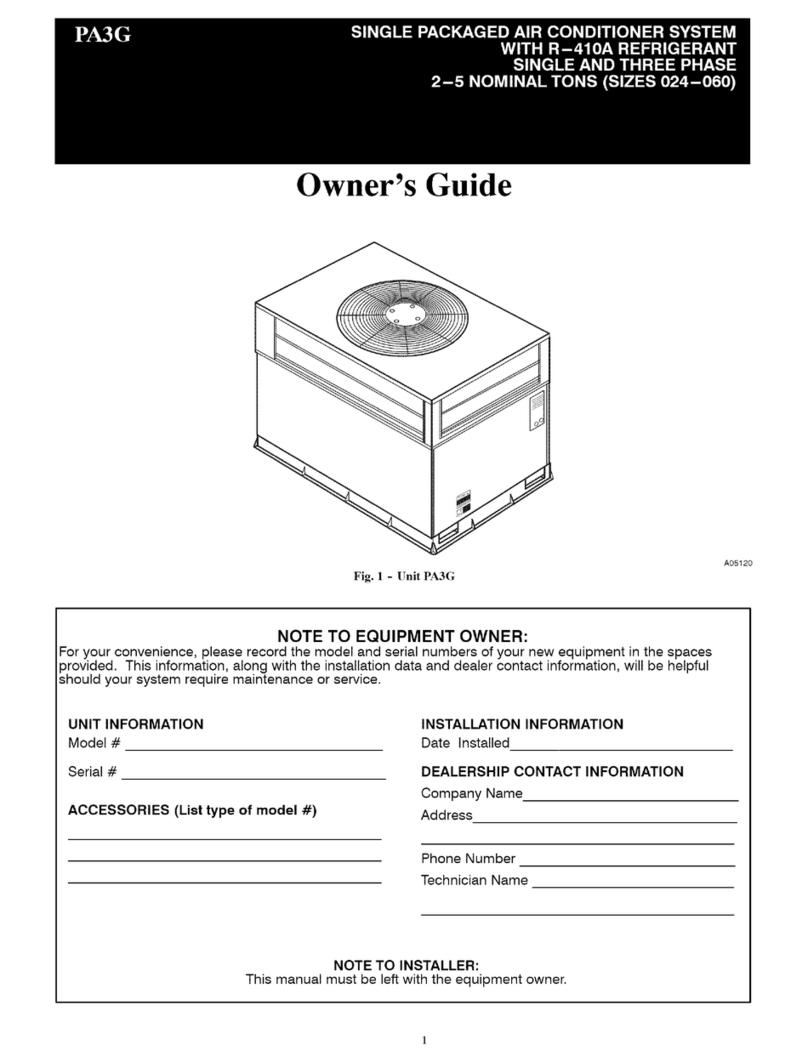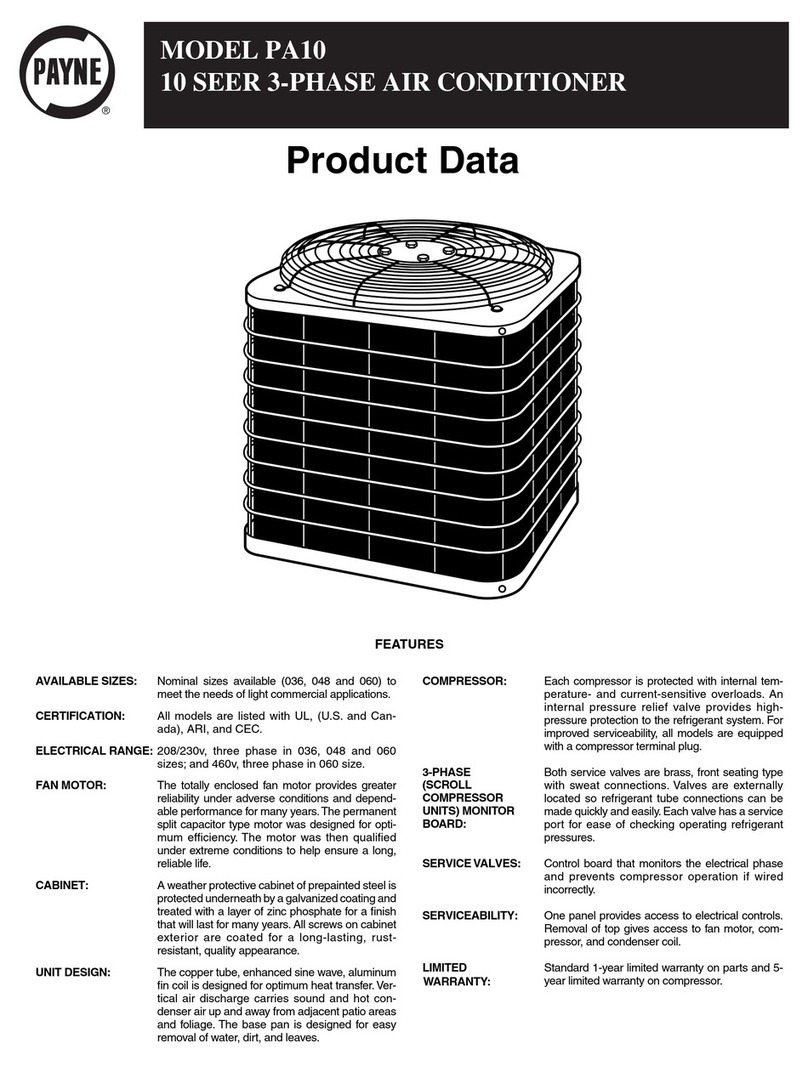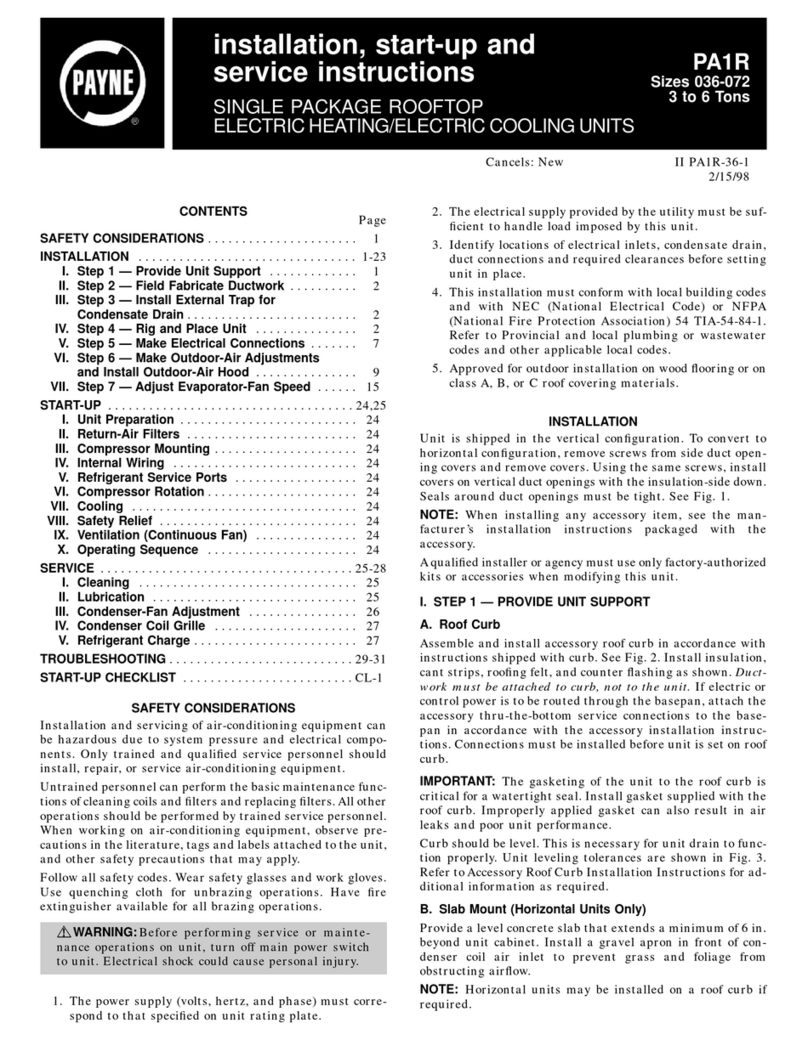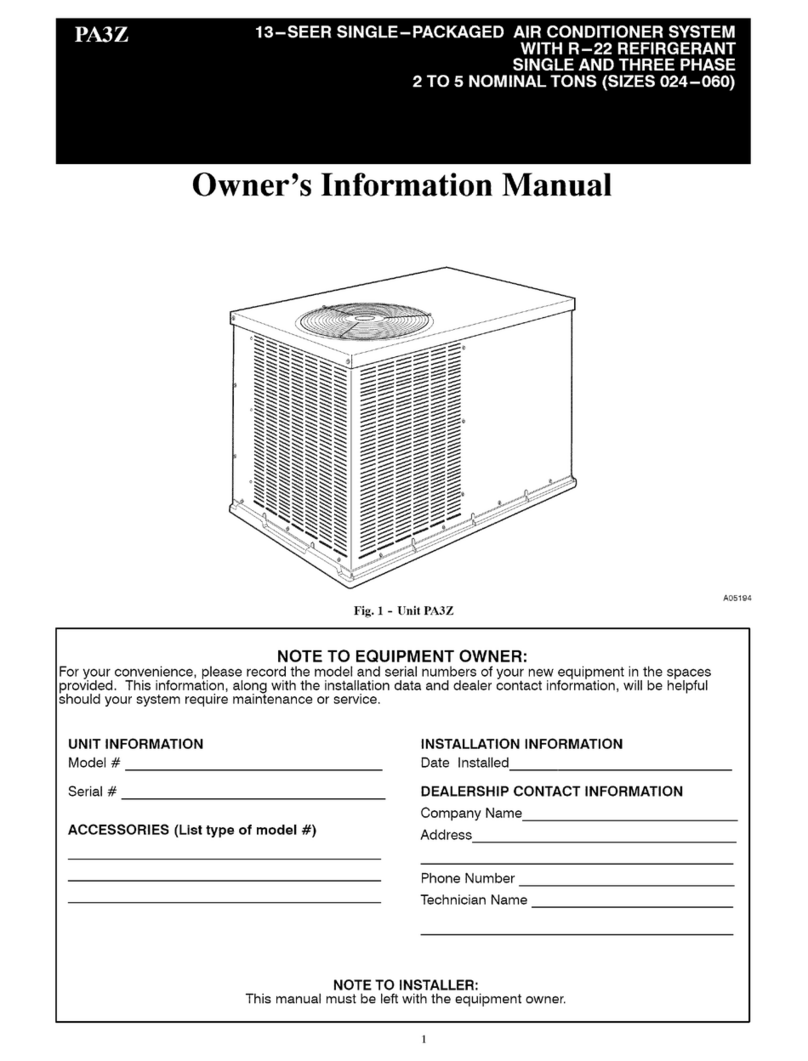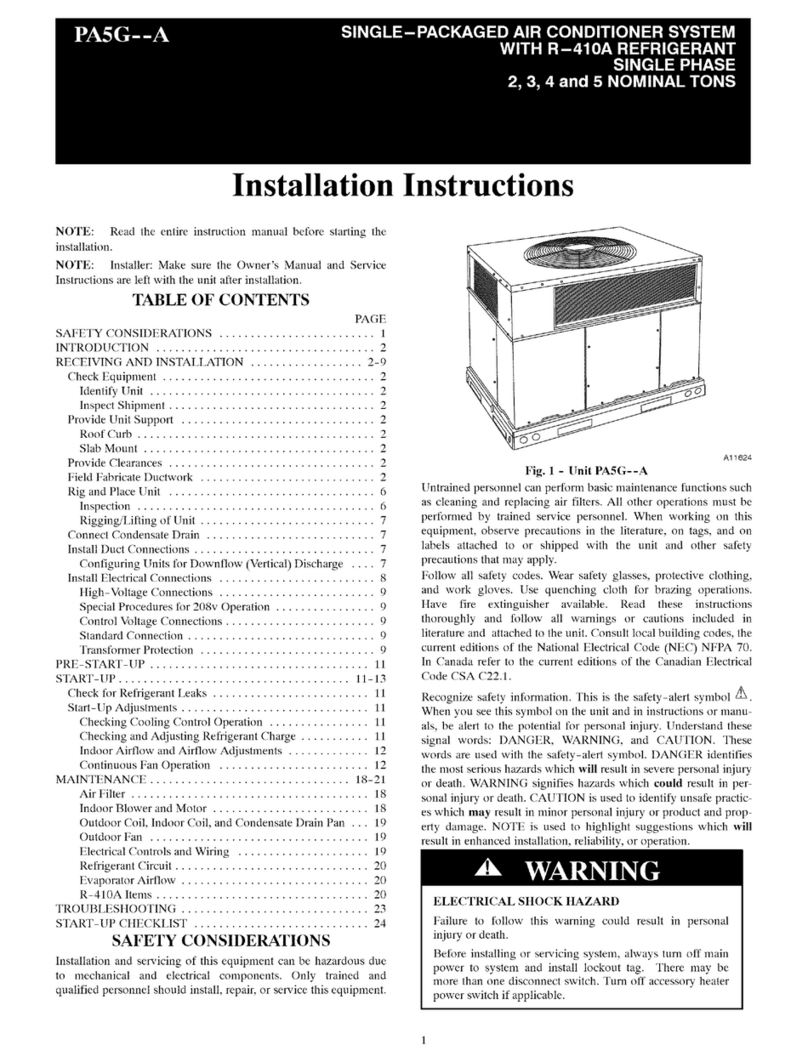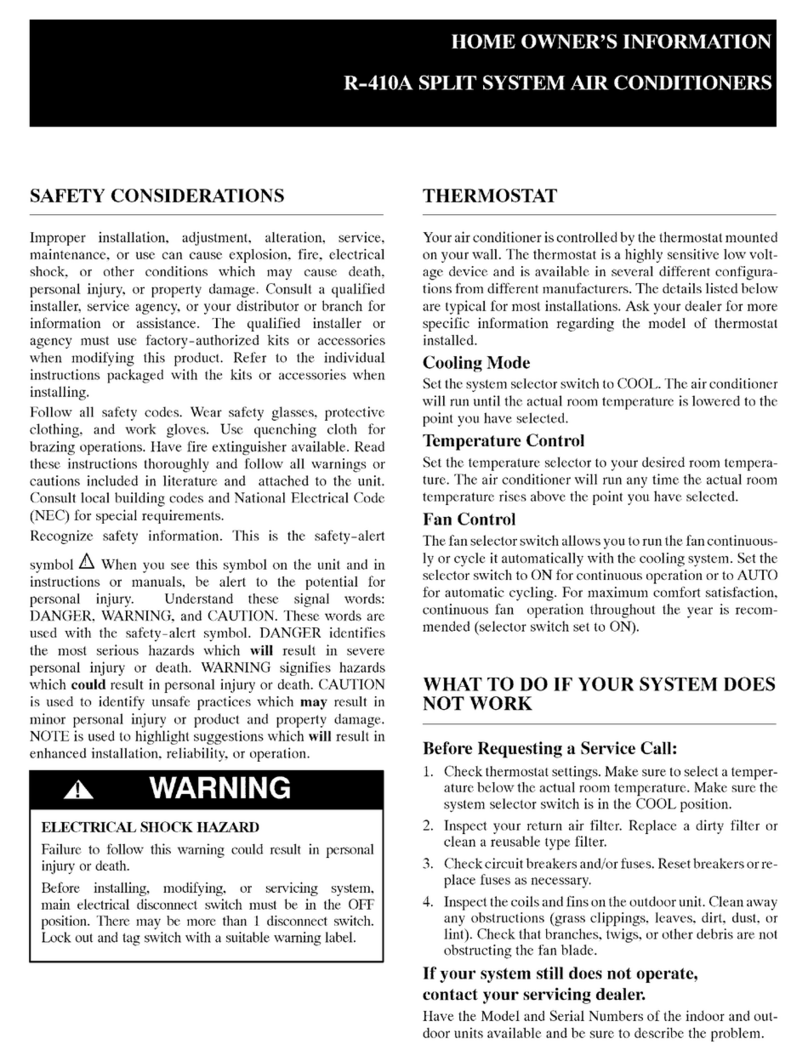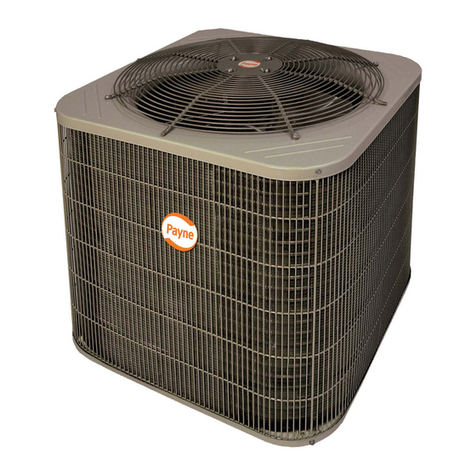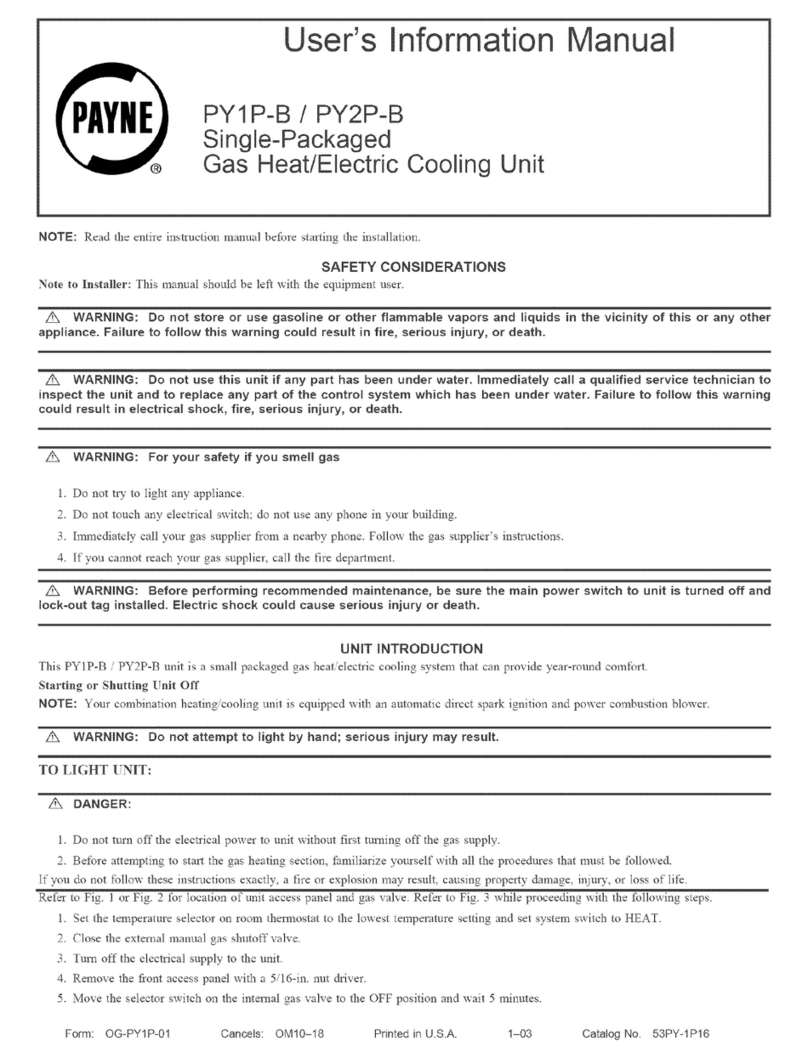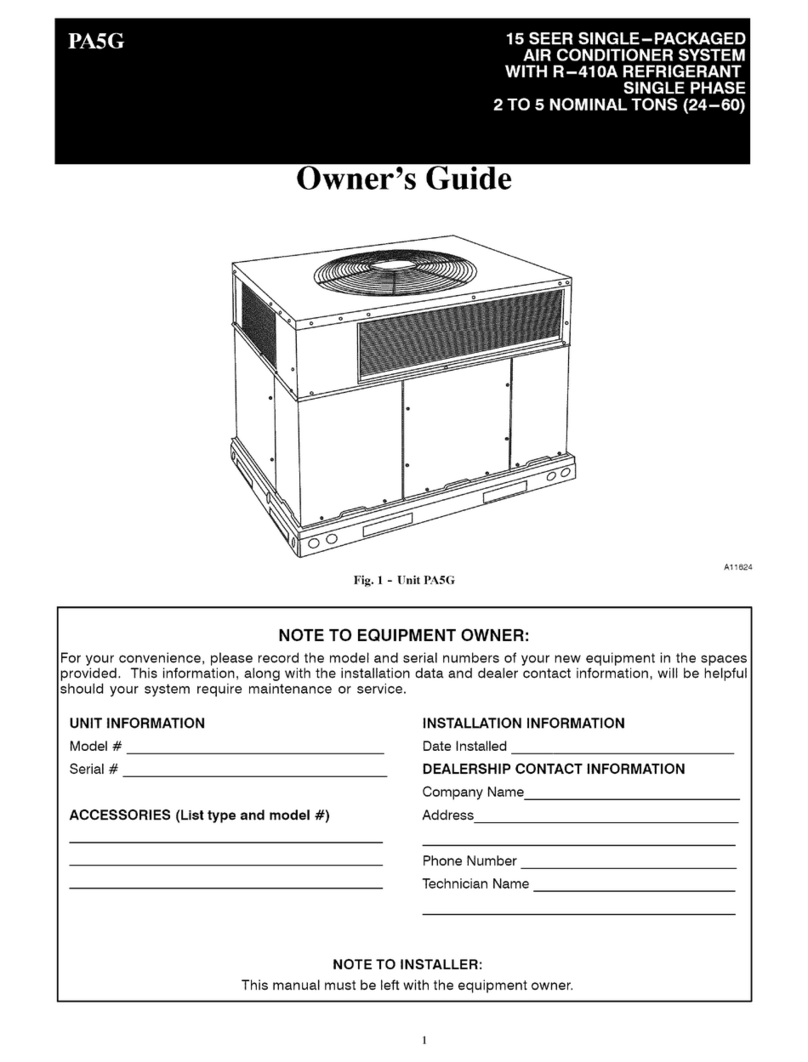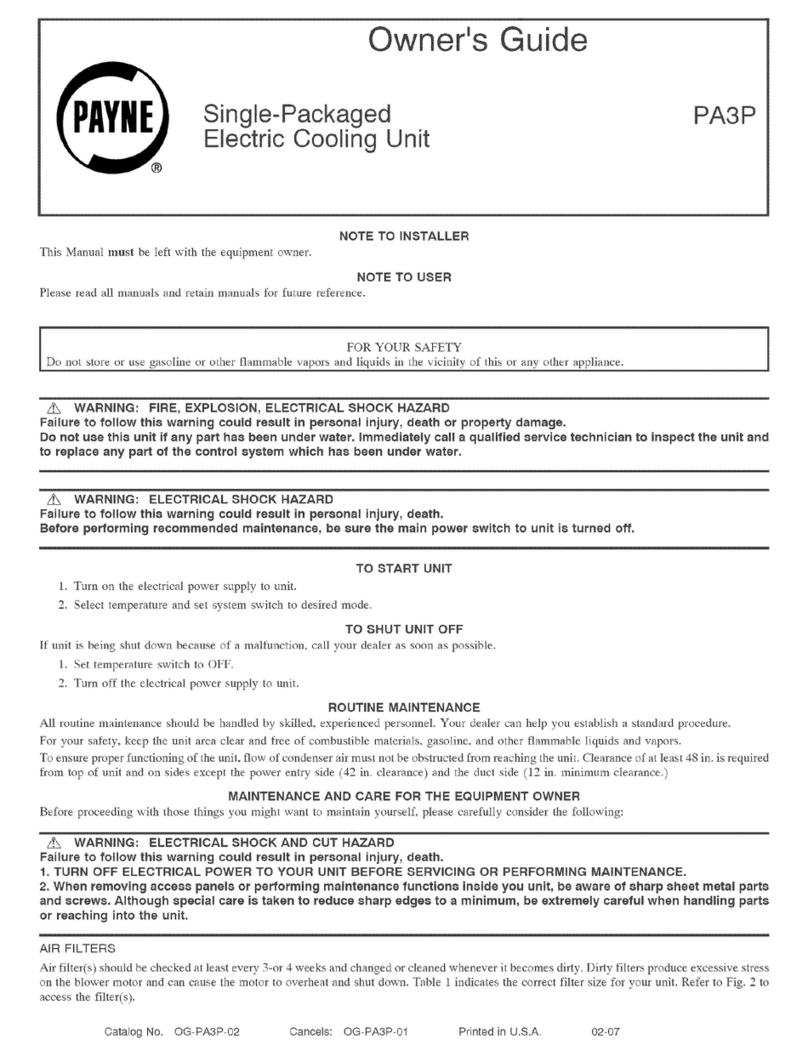Understand the signal words DANGER, WARNING, and CAUTION. These words arc used with the salety-alert symboh DANGER identifies the
most serious hazards which will result in severe personal injury or death. WARNING signifies hazards which could result in personal injury or
death. CAUTION is used to identify uusale practices which may result in minor personal injury or product and property damage. NOTE is used
to highlight suggestions which will result in enhanced installation, reliability, or operation.
AWARNING: FiRE AND ELECTRICAL SHOCK HAZARD
Improper installation, adjustment, alteration, service, maintenance, or use can cause explosion, fire, electrical shock, or
other conditions which could cause serious injury, death or property damage. Consult aqualified installer, service agency,
or your distributor or dealer for information or assistance. The qualified installer or agency must use factory-authorized kits
or accessories when modifying this product.
YOUR COMFORT SYSTEM
A. identifying Your System
Take the time to familiarize yourself with your packaged air conditioning system. This knowledge will be of use in understanding the basic
operation of your new air conditioner. The unit has a rating plate alTixed to it which provides necessary inlk_rmation lk_rspecific identification of
a unit. You should liunilialize yourself with the product, model, and serial numbers listed on each rating plate. Record them lk_rluture relerence
in the space provided at the end of this booklet.
iMPORTANT FACTS
To better protect your investment and to elindnate unnecessary calls, familiarize yourself with the lk_llowing lhcts:
1. Your air conditioning system should never be operated without a clean air filter properly installed. Plan to inspect the filter periodically.
A clogged air filter will increase operating costs and shorten the lili_ of the unit.
2. Supply-air and return-air registers should not be blocked. Drapes, furniture, and toys are some of the items commonly lkmnd obstructing
registers. Restricted airflow lessens the unit's efl]cieucy and lili_ span.
3. The outdool: unit nmst have unrestricted airflow. Do not cover the unit, lean anything against it, or stand on it. Do not allow grass clippings,
leaves, or other debris to accumulate around on top of the unit. Maintain a 30-in. u_inimum clearance between the outdoor unit and tall grass,
vines, shrubs, etc.
4. Your multipurpose indoor thermostat is the control center lk)r your heat pump system. You should fandliarize yourself with its proper
operation. Attempting to control the system by other means lk)r instance, switching the electrical supply power ON and OF_may cause
damage to the unit (See Fig. 3).
5. You may find that you can maintain greater personal comlk)rt by rtmning the fan continuously. "Air pockets" can limn due to the structure
of the house, placement of registers, etc. air pockets may be too cool or warm liar your liking. Continuous fan operation minimizes any
ten_perature dil_erences. Also, systems equipped with electronic or mechauical air cleaners and/or humidifiers ol_i:r the added benefits of
having the air continuously cleaned year-round aud humidified during the winter season.
6. Your air conditioner will remove humidity l_'om your home during the cooling season. After a li:w ndnntes of operation, yon should be able
to see water trickle from the condensate drain. Check this occasionally to be sure the drain system is not clogged. Of course, don't expect
to see much drainage if you live in a very dry environment.
A WARNING: FiRE AND ELECTRICAL HAZARD
Failure to follow this warning could result in personal injury, death and/or property damage.
To prevent serious injury, death, or property damage, read and follow all instructions and warnings, including labels shipped
with or attached to unit before operating your new heat pump.
OPERATING YOUR AiR CONDITIONER
The operation of your air conditioning system is controlled by the indoor therlnostat. You simply adjust the thermostat and it maintains the indoor
temperature at the level you select. Most thermostats liar air conditioning systems have 3 controls: a temperature control selector, a FAN control,
and a SYSTEM or MODE coutroh
B. Cooling Mode
When operating in cooling mode, your air conditioner will run in cooling mode until the indoor temperature is lowered to the level you have
selected. On extremely hot days, your air conditioner will run lbr longer periods at a time and have shorter "olT' periods than on moderate days.
The lbllowing are typical conditions that add extra heat and/or humidity to your home. Your air conditioner will work longer to keep your home
comlk_rtable under these conditions:
1. Entrance doors are fi'eqnently opened and closed
2. Laundry appliances am being operated
3. A shower is running
4. More than the usual number of people are present in the home
5. More than the normal number of electric lights are in use
6. Drapes are open on the sunny side of the home
C, Heating Cycle
If you own a packaged air conditioner that includes electric heat as an accessory, you need to set your thermostat lk_r heating when it is desired.
2
